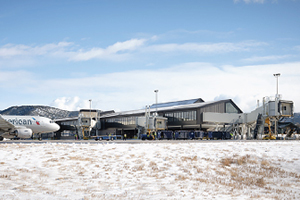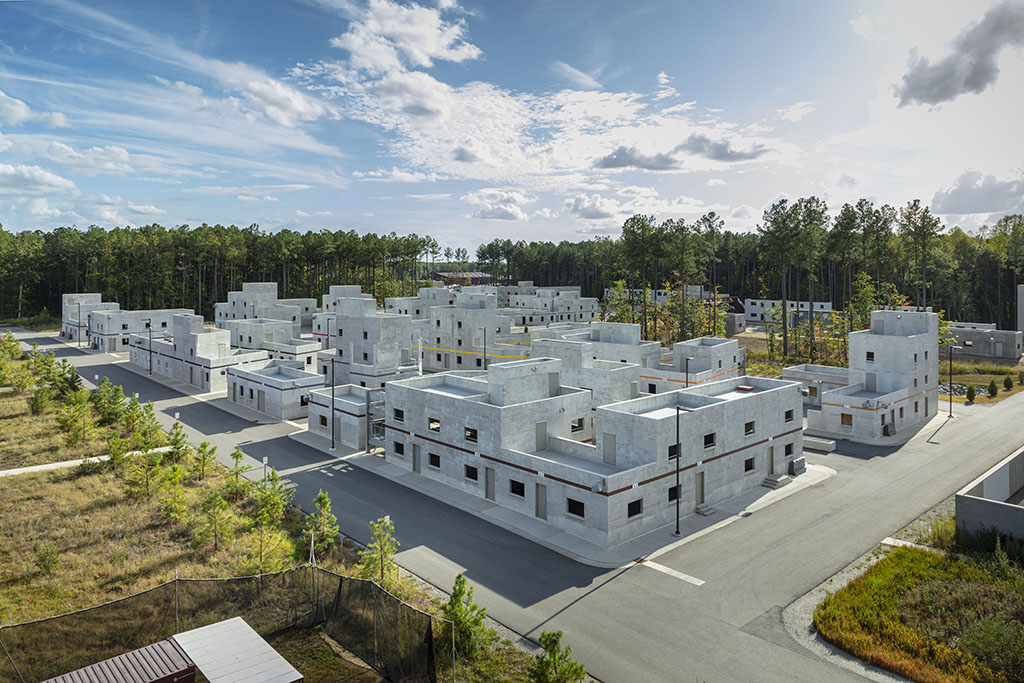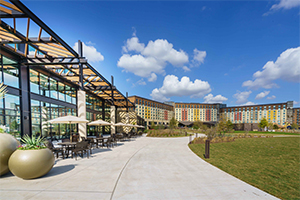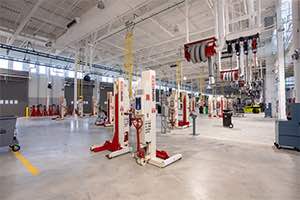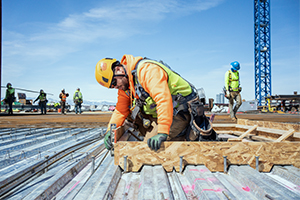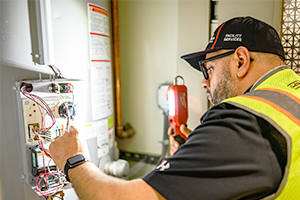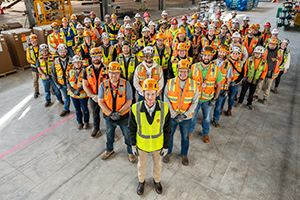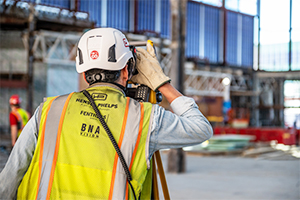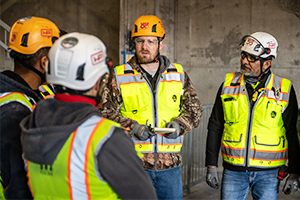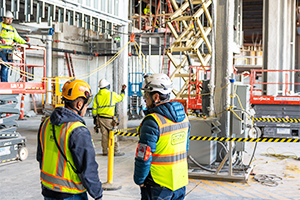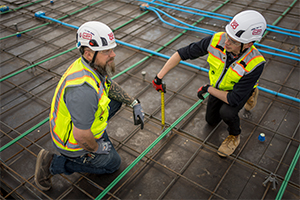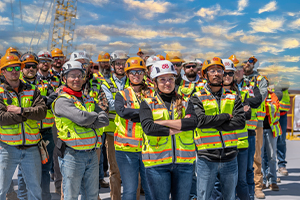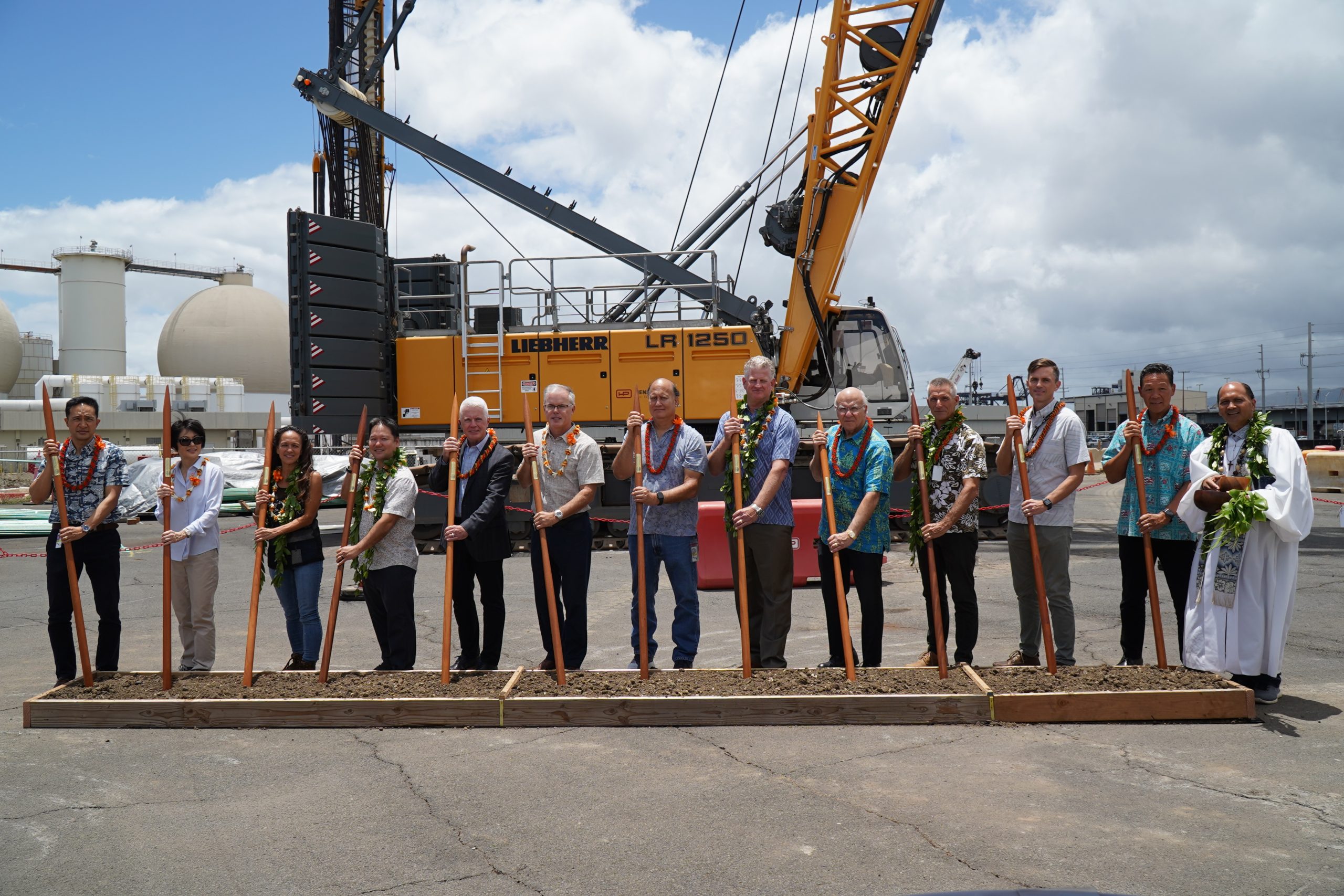
Hensel Phelps starts every construction project in Hawai‘i with a traditional Hawaiian groundbreaking and blessing ceremony. Of great significance to the culture, this practice shows respect and honor for the affected land and unites the project team in a shared sentiment of mutual respect.
Led by a kahu, or priest, the ceremony incorporates various symbolic Hawaiian elements. The ‘ō’ō, a digging stick traditionally used to break the ground, signifies the start of the project. A conch shell is blown to call and gather people together. Paʻakai, or Hawaiian salt, is sprinkled over the land to preserve the goodness in the land and promote prosperity throughout the project. Rainwater represents a connection to the past and the blessings of nature. Sprinkling rainwater with leaves of the ti plant (cordyline fruticose)symbolizes health, nourishment and security. A maile (alyxia stellata) lei, representing unity, connects the project team together. The maile lei is untied to symbolize bringing the project to life. After the ceremony, a lei is hung at the jobsite as a reminder of the blessing.
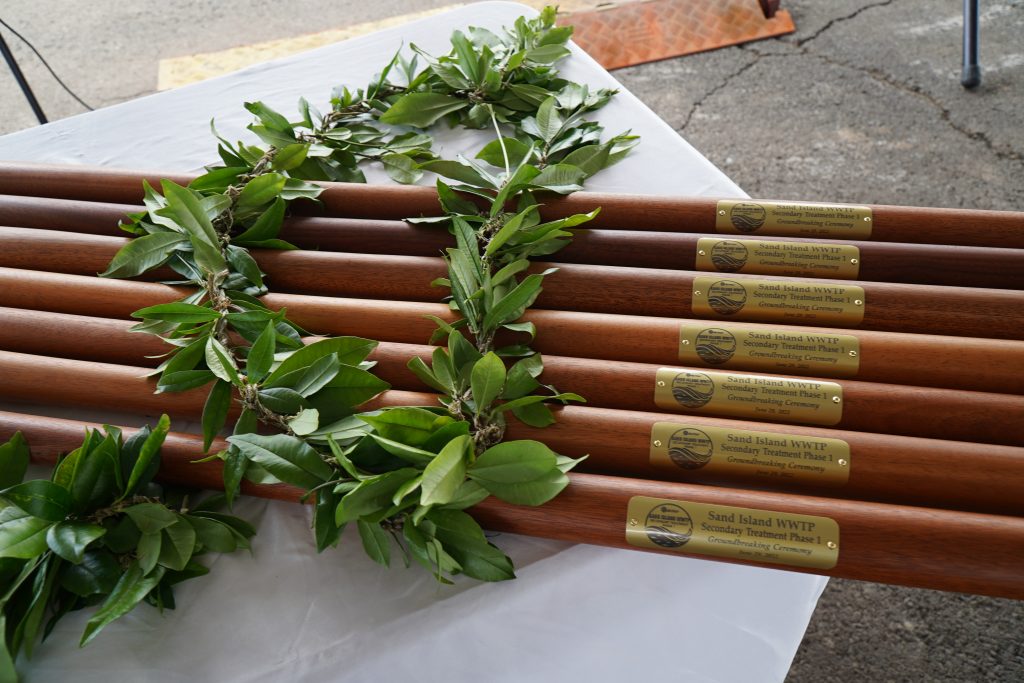
Led by a kahu, or priest, the ceremony incorporates various symbolic Hawaiian elements. The ‘ō’ō, a digging stick traditionally used to break the ground, signifies the start of the project. A conch shell is blown to call and gather people together. Paʻakai, or Hawaiian salt, is sprinkled over the land to preserve the goodness in the land and promote prosperity throughout the project. Rainwater represents a connection to the past and the blessings of nature. Sprinkling rainwater with leaves of the ti plant (cordyline fruticose) symbolizes health, nourishment and security. A maile (alyxia stellata) lei, representing unity, connects the project team together. The maile lei is untied to symbolize bringing the project to life. After the ceremony, a lei is hung at the jobsite as a reminder of the blessing.
“Everything in Hawai‘i receives a blessing,” said Kahu Kekoa Kordell, a Hawaiian priest who has performed numerous Hensel Phelps blessing ceremonies. “Blessings are important to us because our land is scarce. We want to make sure that anytime we build on our land in Hawai‘i we honor those who have come before us. The Hawaiian culture places great emphasis on respecting and honoring the land. With limited available space, every parcel of land in Hawai‘i holds significant value and importance.”
The ceremony also incorporates aloha and malama ʻāina by encouraging and sharing the sentiment of love, compassion and respect (aloha) among all participants. Malama ‘āina, translates to caring for and protecting the land. As stewards of the project, builders are responsible for doing what is right and treating the land with honor and respect.
Hensel Phelps Project Manager Kaha‘i Choy, who is also kānaka maoli (of Native Hawaiian descent), explains the importance of doing what is right.
“In Hawai‘i, you need to be aligned with your mind, body and spirit before you start anything. It is our duty that we are doing this in a respectful way,” Choy said. “The ceremony also reinforces the connection between people and the land, honoring the past while embracing the future. Joined by project stakeholders and dignitaries, Hensel Phelps approaches every construction project in Hawai‘i with mindfulness and respect for these Hawaiian cultural values.”
To learn more about Hensel Phelps’ Diversity and Inclusion campaign, visit Building Together.



